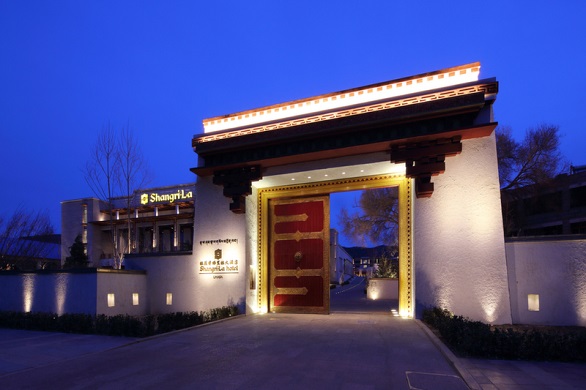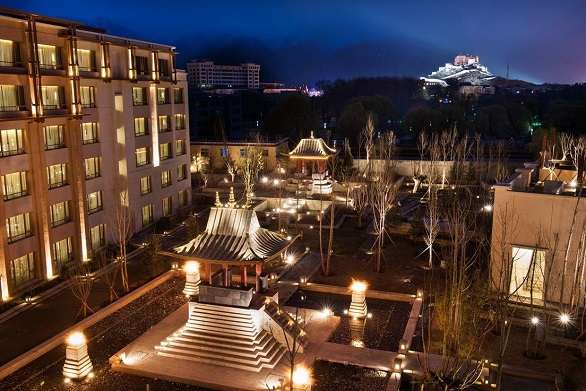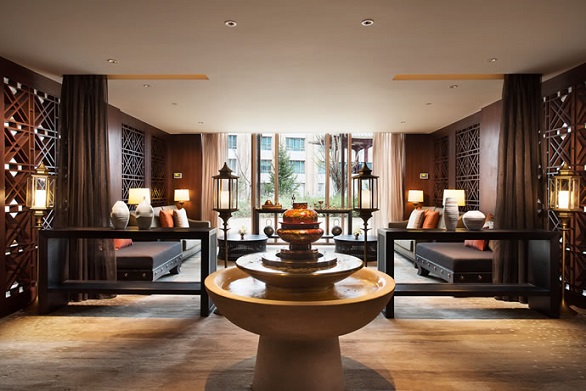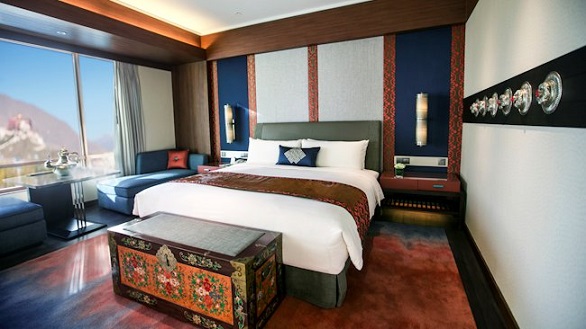The luxury hotel chain based in Hong Kong, Shangri-La Hotels & Resorts, has recently opened the doors of a new five-star hotel on the highest plateau of the planet (that is the Tibetan Plateau, that is in over 4,000 m altitude), one of the most mythical and legendary destinations on the face of the earth. Located in Lhasa, the administrative capital of Tibet, and nearby the high mountains of the Himalayas, the new urban resort boasts 289 rooms (262 luxurious rooms and 17 spacious suites). Shangri-La Hotel, Lhasa, is only 40 minutes drive from Lhasa Gongar Airport and ten minutes from the highest train station in the world.
Upon arrival, guests are greeted with an offering, a traditional ceremony in a white silk scarf. That is throwing some barley in a wooden container that Tibetans once used to pray for a good harvest season. Shangri -La also offers Lhasa travelers extensive food options. The more casual Lodger’s Lounge or Shang Palace have Chinese theme, but the most impressive place is Shambala, which specializes in Tibetan and Yunnan cuisine.
Ester Marcaida, the general manager of Shangri-La Hotel Lhasa said that it is extremely important that, wherever there are hotels, they should adapt to the community and local culture and that their hotels reflect this authenticity through their designs and offers. The new 5-star hotel features the first oxygen room of a hotel in Lhasa. It has a sealed room treatment with glass walls and it is pressurized to match the density of air at sea level. It is a place where guests that arrive there can drink tea and participate inlocally inspired rituals.
While there, don’t miss the chance to visit the Sera Monastery that was founded by Sakya Yeshe in 1419 and is one of the largest monasteries in the city. Another one that is important to remember is the Gandan Monastery, located 60 km east of Lhasa. It was built by the founder of the Gelugpa family in the fifteenth century and includes the Academy of Yangbagyainjia sutras and Coquin room. A visit to Barkhor is also essential, as it is a center of trade where you can find souvenirs made exclusively by Tibetans as well as places where you can taste typical dishes based on the characteristics of cereals and goat cheese.

















